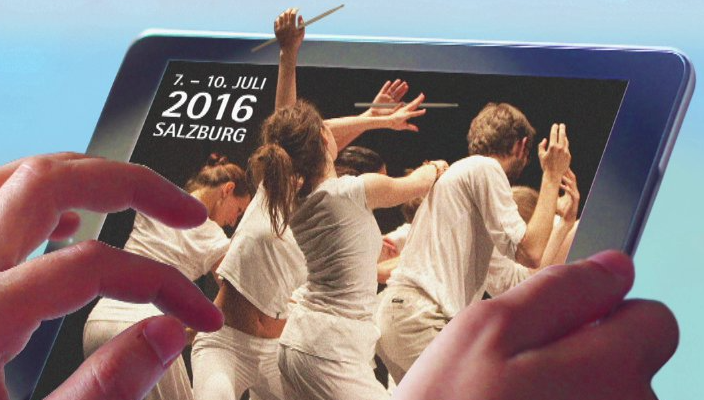Here it is. A blog post with a subtle title based upon the recent 9th International Orff-Schulwerk Symposium. I had the fortune of not only attending but coming away with a renewed interest in creativity, technology integration and reflection. The last two years working overseas have been intense yet very rewarding. I have taught in South Korea, conducted and visited String and Band conferences from China to Vietnam, been a guest conductor for a Middle Years Strings Ensemble at Seoul Foreign School and worked in developing Music Curriculum K-12 (or PYP, MYP and DP) at the International School I was employed at. I even got to teach at local Korean schools and perform there with my Jazz Band. All of which I have loved and learned a great deal from. But after the Orff Symposium this July, which was based on ‘Elemental Music and Dance Education in the Changing World of Media’ I was able to breathe, reflect and put some thoughts into action before starting my new job in Vienna, Austria.
The Orff Schulwerk approach is something I build most of my teaching on/around. But after two years of much effort I needed more time to compose, improvise and create, myself. These few days with other educators at the institute showed me how creative and innovative other teachers were at inspiring students in their classrooms. So I fired up this website again to begin improvising, creating and sharing.
“Focussing on the foundations of Orff-Schulwerk, [the orffinstitut.at] regards the relationship between music, language and dance as the basis of musical socialisation and development of the personality, creative potential and artistic expression…”
While at the Symposium I saw concerts of mixed media, electronic music and dance, lessons by educators that involved technology authentically, and I created connections with amazing educators. Three people I want to give special mention to are Sonja Stibi (University professor for Elemental Music and Dance Pedagogy, and Director of the Orff Institute), Terhi Oksanen (Music Educator from Finland) and Martin Neuhold (Guitarist and Composer).
Sonja Stibi attended the first workshop I was in instantly began a discussion with me as if I was a friend or colleague. Her welcoming manner and desire to integrate Music and Movement with technology was amazing. Sonja’s opening Keynote entitled ‘Potential and Challenges of the Analogue and Digital’ was also very astute in the way in which she voiced the need for music, technology and education to find new ways of connecting meaningfully.
Terhi Oksanen was the presenter of my first workshop. Terhi ran her participants through a series of body percussion, chanting and dance lessons to then extend the concepts learnt with Novations’ Launchpad on the iPad. This process is how technology should be integrated and it was wonderful to have so many solid Orff principles demonstrated before bringing out the iPads. As the conference was focussed on music and dance pedagogy, reflecting on the five basic body actions (i.e. Laban’s movement analyses) and how such activities could lead to students making their learning visible, with technology, was inspiring. I have been using movement activities with my elementary and senior students for analysis, composition and rhythm internalisation. But never to work with looping software. Terhi had us exploring five basic actions and then consider writing our own dance soundtrack with Launchpad! The five basic body actions are:
1. Locomotion
2. Stillness
3. Gesture
4. Jump
5. Turn
Terhi’s students had prepared dance videos using her lessons that conveyed understanding of pitch, rhythm, structure, texture and style. This creative process has since inspired many new ideas for my own teaching.
II.1 Terhi Oksanen on Composing Music from Janet English on Vimeo.
Finally, Martin Neuhold, who within 30minutes demonstrated a very simple yet powerful concept of connecting applications with AudioBus on the iPad for a single performance. Many have done this before on Youtube, for example. Yet the way Martin brought the concept forward, for a room full of teachers was clear and inspiring.

I instantly went home and composed the soundtrack for a short film building on his method. My own students will be benefiting from his demonstration!
Each session I attended gave me new insights into the many units and lessons I had taught, the technology I had integrated and even the movement lessons I had run. Armed with my lessons from Kindergarten to Year 12 I am happy to say there will be more postings, scope & sequence planners, iTunesU courses and presentation materials coming soon. Wrightstuffmusic is back up and running so please comment and share with me.
> image courtesy of www.uni-mozarteum.at

Hi,
I just stumbled across your blog post while searching for articles about the Orff Symposium. Very cool that you could benefit from my 30 minute demonstration. Speaking in front of all of you music teachers was a great experience for me.
I really enjoyed the two tracks you posted above. I’ll look you up on soundcloud 😊
All the best, Martin
Thanks Martin. I am getting back into blogging for the new year. Moving to Vienna was a big change and I can say I am starting to find my feet again. How has the Orff journey been for you?